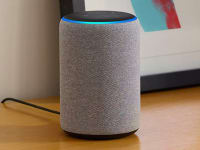How to enable Sound Detection for Alexa Routines
The feature can keep an ear out for common household noises.
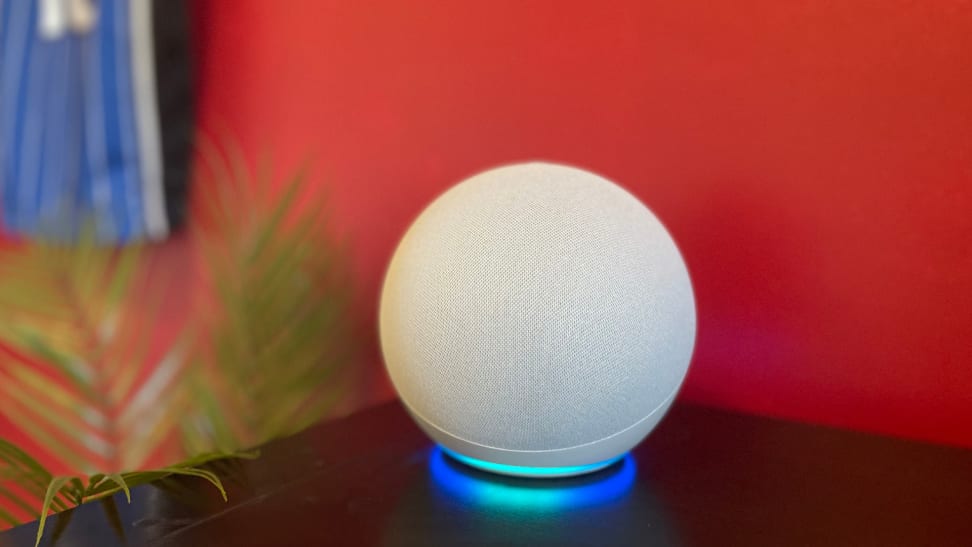 Credit:
Reviewed / Rachel Murphy
Credit:
Reviewed / Rachel Murphy
Products are chosen independently by our editors. Purchases made through our links may earn us a commission.
Amazon’s Echo smart speakers and displays can listen for more than just your wake word—devices like the Echo Dot and Echo Show 5 can also keep an ear out for everyday household noises like barking dogs, appliance beeps, and even your snoring spouse (to name a few). The idea is to help turn your home's everyday sounds into triggers for your smart devices to make your life a little easier.
When your designated Echo device detects a particular sound, it can trigger a series of smart home commands based on your pre-programmed Alexa Routines.
The sound-detecting feature is optional (we discuss privacy concerns toward the end of this post) and currently available as a public preview in the Amazon Alexa app. I’ve been using it regularly at my house for a while now, and so far I'm impressed. Here’s how it works—and how you can benefit from it.
How does Sound Detection for Alexa Routines work?
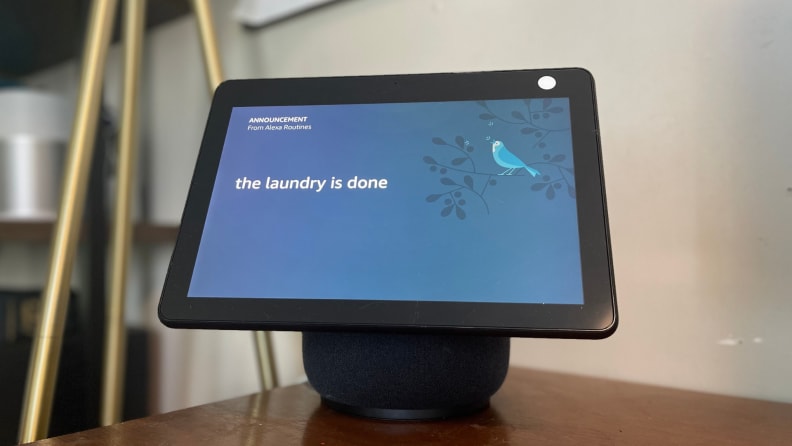
I have an Echo speaker next to my washer/dryer that's set up to listen for appliance beeps. When that happens, my Echo Show 10 makes an announcement telling me the laundry is done.
Echo smart speakers and displays can listen for a wide variety of sounds like snoring, coughing, dogs barking, babies crying, beeping appliances, and leaking water.
When used with Alexa Routines, a series of skills set by you in the Alexa app, Sound Detection can leverage your smart Alexa devices to trigger a series of subsequent actions.
There are a lot of possibilities when it comes to using Alexa’s Sound Detection feature. For example, you can set the front porch lights to automatically turn on every time one of your Echo devices hears your dog bark at night.
You can also set the speaker to start playing soothing lullabies when it detects a crying baby or white noise from a nearby speaker when it hears your spouse snoring at night.
The feature can also be used as a way to provide visual clues to those with hearing impairments. If Alexa detects running water for a period of time, for instance, she can trigger the living room smart lights to flash on and off, serving as a visual reminder to shut off the faucet.
Ultimately, Alexa’s sound detection feature can help you and your Amazon-powered smart home operate more smoothly.
To use the new preview of the Sound Detection feature, you need an Amazon Echo smart speaker, like a fifth-gen Echo Dot, or an Echo Show display.

Enjoy clearer vocals, deeper bass, and richer sound with the best audio yet from any Echo Dot with Alexa.

Alexa can show you even more with an 8” HD touchscreen, adaptive color, stereo speakers, and a 13 MP auto-framing camera for video calls.
(At the time of publication, Alexa Sound Detection is not supported on third-party smart speakers like the Bose Home 300 or Sonos One.) Be sure to place the speaker or display in the same room as the trigger sound. Next, you’ll need to enable Sound Detection alerts.
How to enable Sound Detection alerts on Amazon Echo devices
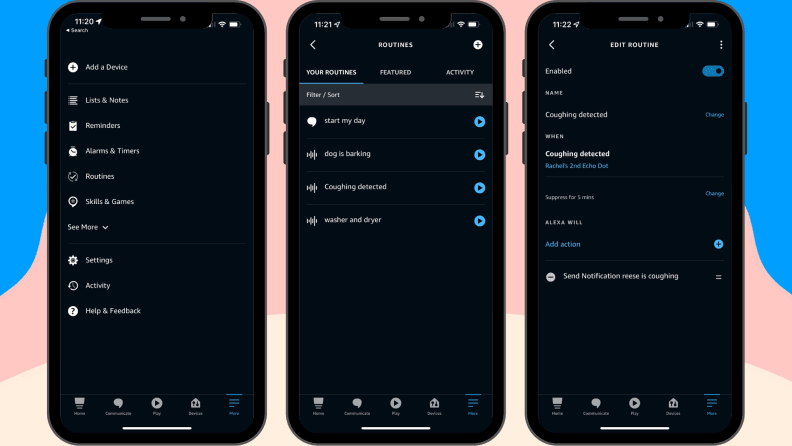
You can set up your Echo speaker or display to listen for certain sounds in the Alexa app for iOS and Android.
- Step 1. Open the Amazon Alexa app.
- Step 2. Tap More in the bottom right corner > Routines.
- Step 3. Tap plus sign in the upper right corner to open a new Routine. Name the Routine.
- Step 4. Tap When this happens > Sound Detection. Select the sound you want the device to listen for.
- Step 5. Choose the Echo speaker or display that should listen for the sound. Tap Next.
- Step 6. Choose the days and times to activate the Routine. Tap Next.
- Step 7. Tap Add Action to open up a list of automated tasks Alexa can do when a particular sound is detected. Select the action you want to perform (multiple actions are OK) and tap Save to finish.
I like to give my newly-created routines a quick, real-time test to make sure everything is running smoothly. To test out my routine set to detect coughing in my daughter’s bedroom, I simply coughed near her Amazon Echo kid’s speaker. Within seconds, I received a push alert on my phone (the action I set up) notifying me of the sound.
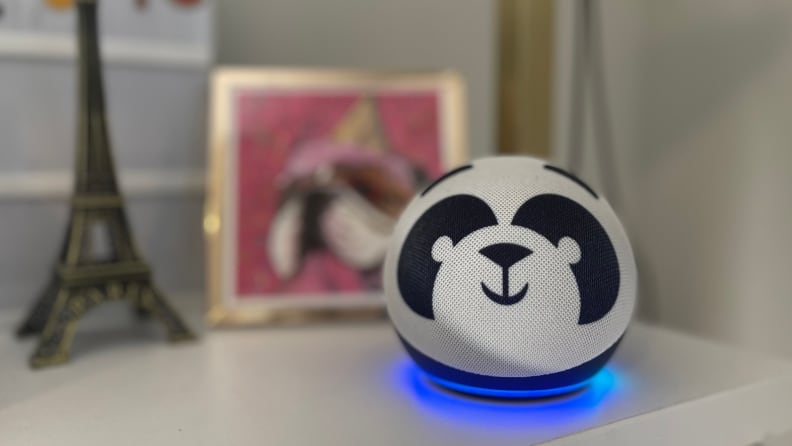
During a recent illness, I setup my daughter's Echo speaker for kids to listen out for coughs.
Testing in real-time may not be possible if, say, your speaker is set up to listen for your dog barking but your dog is napping. Even if you can’t get the sound to play at that moment, you can still check to make sure your routine triggers as expected by running an alert test.
In the Amazon Alexa app, next to your sound routine of choice, tap the play button. This will set your routine into motion without your speaker having to listen for a specific sound.
Need to make changes? You can do so at any time on the Routines homepage in the Amazon Alexa app by tapping the routine you want to edit. This is also where you can view the activity history for each routine.
Custom sounds for Alexa aren't available yet. But someday, you should be able to teach Alexa to listen for sounds specific to your household—not just generic beeps and barks.
Privacy
As for privacy, Amazon states that Echo devices do not send or store any audio from Sound Detection to the cloud. If you don’t want your Amazon speaker listening for specific sounds, delete the Alexa Routine with Sound Detection.
Alternatively, you can press the mic mute button on the top of your Echo speaker (or tap the top of your Echo Show display) to prevent it from listening.
It can be hard to trust big tech but Amazon's policy does provide some reassurance that no one but you can hear the private noises from inside of your home.

